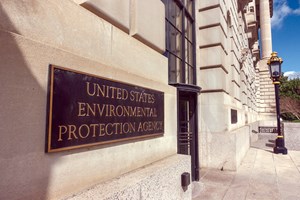Connecticut to build emergency waterline to protect drinking water infrastructure from climate change
(WO) – The U.S. Environmental Protection Agency announced the selection of the Connecticut Department of Public Health for a $556,000 grant to construct an emergency waterline and pumping station to protect drinking water system infrastructure in Montville, Conn., from drought.

This funding is part of $25.5 million in grants announced by the Biden-Harris Administration through a new program to support drinking water systems in underserved, small, and disadvantaged communities while reducing impacts of climate change.
This is the first time EPA is awarding funding under the Drinking Water System Infrastructure Resilience and Sustainability Program, with the 16 inaugural selectees spanning Connecticut to Alaska.
The Connecticut Department of Public Health is one of 16 selected recipients of this new funding:
Connecticut Department of Public Health: $556,000 to construct an emergency waterline and pumping station to protect drinking water system infrastructure from drought.
The proposed project will consist of the installation of a new water main to provide an emergency interconnection between Southeastern Connecticut Water Authority's (SCWA's) Montville and Seven Oaks Divisions distribution systems, as well as a new drinking water pumping station will be constructed to provide adequate pressure to the system, allowing the Seven Oaks Division to supply the Montville Division with water when experiencing inadequate supply issues during drought periods and heavy summer use.
"Every person deserves access to clean and safe drinking water, and no family should have to worry that when they turn on the tap, nothing comes out. Yet, many communities across New England are already experiencing the effects of droughts and floods, exacerbated by climate change, which threaten their supply to clean, reliable water," said EPA Regional Administrator David W. Cash.
"Today's announcement represents another crucial step toward building the resilience of our water infrastructure and ensuring that all communities, especially those most vulnerable, can weather the challenges brought on by a changing climate.”
Related News
From Archive

- Glenfarne Alaska LNG targets late-2026 construction start for 807-mile pipeline project
- U.S. water reuse boom to fuel $47 billion in infrastructure spending through 2035
- $2.3 billion approved to construct 236-mile Texas-to-Gulf gas pipeline
- Major water pipe break in Puerto Rico hits over 165,000 customers
- Potomac River Tunnel project enters construction phase beneath Washington, D.C.
- Pennsylvania American Water launches interactive map to identify, replace lead water service lines
- Trump's tariffs drive $33 million cost increase for Cincinnati sewer project
- Utah city launches historic $70 million tunnel project using box jacking under active rail line
- Tulsa residents warned after sewer lines damaged by boring work
- Fatal trench collapse halts sewer construction in Massachusetts; two workers hospitalized



Comments